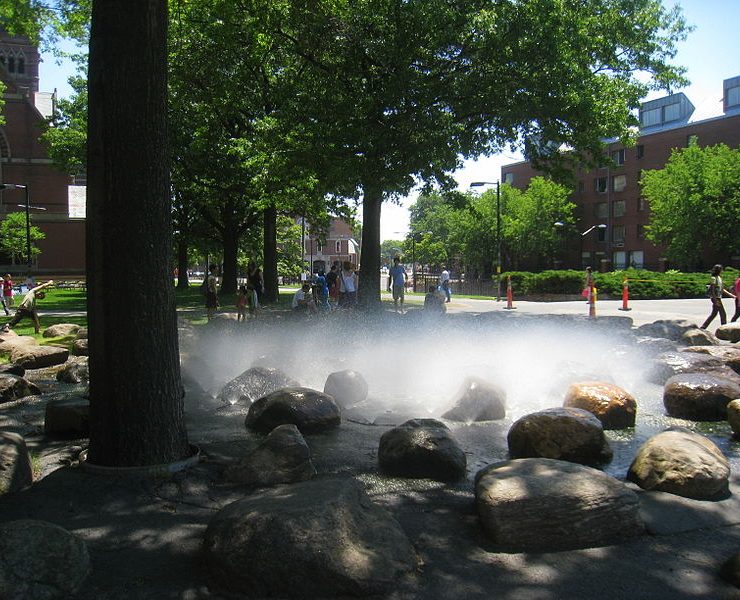mystery
As though it werent apparent by now, when i travel, look for watershapes.< p >
It' s been a professional practice of mine since 1986, when i started working at pool & spa news, but it was established as personal habit long before then. even child (and my parents could attest if they were still with us), drawn to water wherever went
This means I've seen and studied lots of fountains through the years. It also means that I pay lots of attention when I run into an unconventional one, as was certainly the case with the Tanner Fountain on the campus of Harvard University in Cambridge, Mass. When I saw its arrangement of stones and the wonderful way it uses mist to make the space mysterious yet strangely inviting, I was hooked.
Designed by landscape architect Peter Walker in collaboration with sculptor Joan Brigham and fountain expert Richard Chaix, the watershape sits along a busy pedestrian thoroughfare near Harvard Yard. An early and perhaps even the first example of the "Landscape as Art" movement that started at Harvard around the time the fountain was installed in 1984, the composition consists of concentric rings of granite boulders looping around 32 jets located near the center. The jets produce water sprays and a dense mist that envelops the stones like a cloud.
When I first saw the Tanner Fountain, I was immediately reminded of the inverted fountain on the UCLA campus, which I wrote about in a travelogue back in June 2013 (click here). But where the effect of the UCLA fountain was to inspire mirth (at least to my somewhat twisty mind), the Tanner Fountain simply inspires, especially on days when the air is still and the mist has its way with the space.
The video linked below shows the layout of the stones and how their placement invites observers to come close, pass within the rings and approach the source of the mist. My big regret is that I missed seeing the space covered in snow - a phenomenon that puts a completely different spin on the composition. But I still count myself lucky: I saw it on a warm late-summer day when the cooling mist was unusually welcome.
In short, I love this fountain. The next time you're in the area, stop on by - and please give yourself enough time to observe the space at your leisure, especially taking in the way people (especially children, if any are around) interact with the mist: It's a treat on more levels than I can count.
To see a brief, wonderfully informative (if deadpan) video showing the various moods and seasons of Tanner Fountain, click here.
As adults, we too often forget one of the great joys of childhood - the sense of wonder and discovery we experienced when we first saw the ocean or flew in an airplane and the world opened and unfolded before our very eyes. As designers, I believe we similarly forget about the excitement that comes with discovery. Too often, we lay out beautiful lines and incorporate interesting and unusual plant and hardscape material for everyone to see all at once. The work may be beautiful, but it leaves little or nothing to the imagination and offers no surprises. I can't help thinking how much more our landscapes, public and private, would be savored if they were to be explored and discovered bit by bit. This is especially true for spaces containing watershapes, which by themselves lend interest and drama to almost any space: The magic of water can (and I believe should) be exploited by concealing it at first and then revealing it in a way that gives the viewer a brief moment of visual revelation. To see what I mean with respect to watershapes and waterscapes, let's explore an approach that makes seeing everything immediately an impossibility. Instead, this approach offers glimpses that tantalize and intrigue - and can be seen in the work of thoughtful garden designers who've manipulated sights and sounds around the















